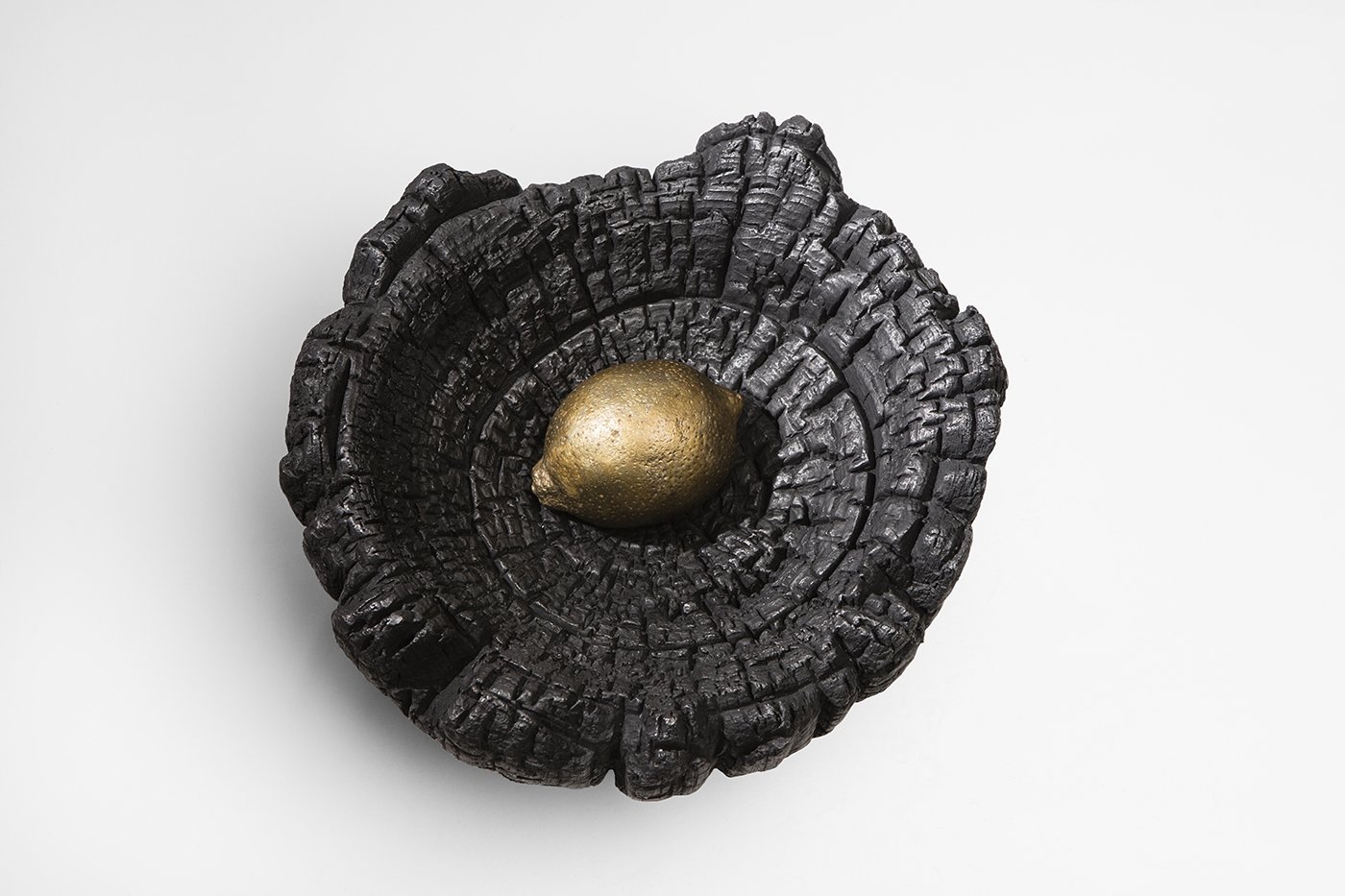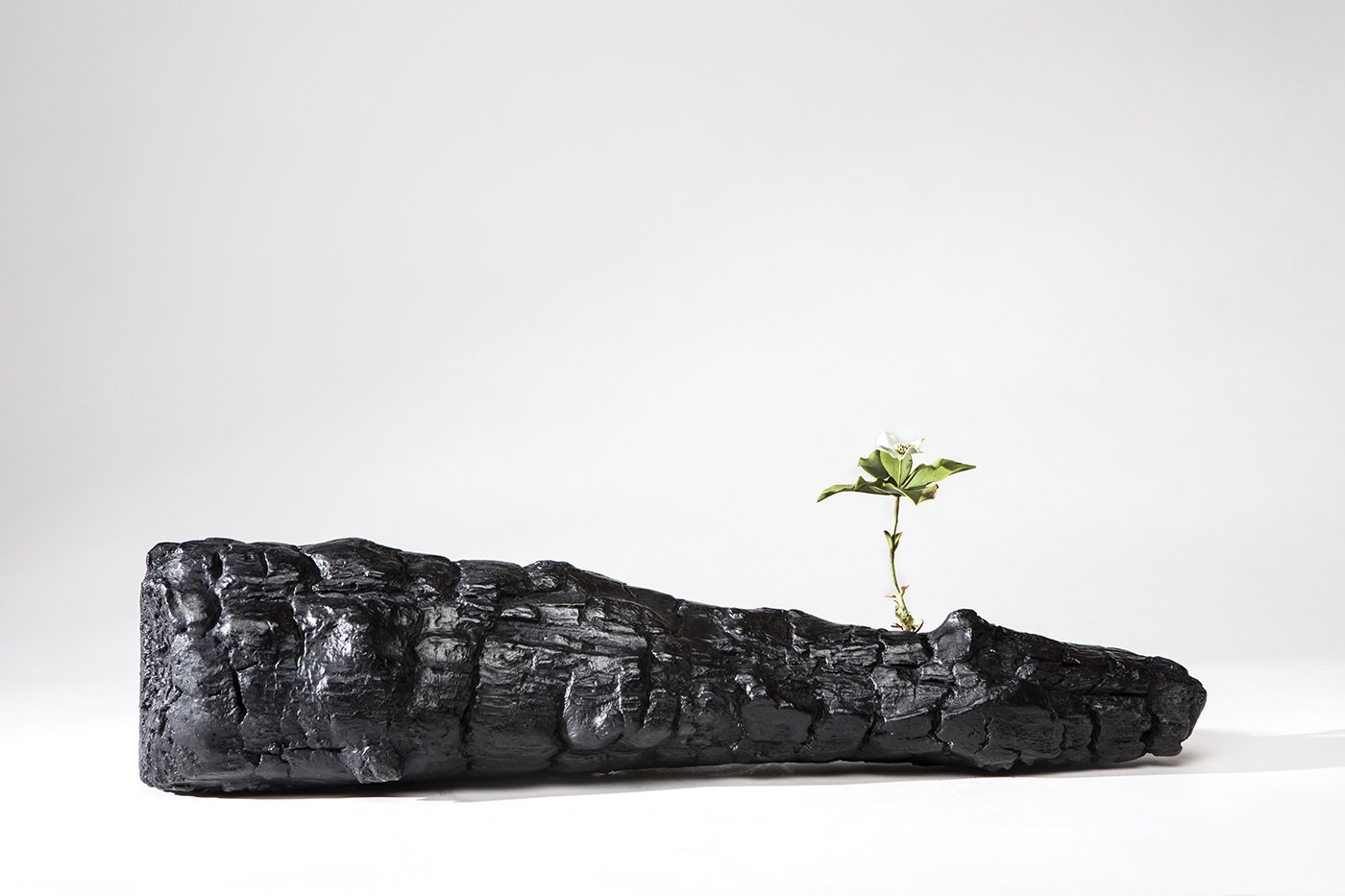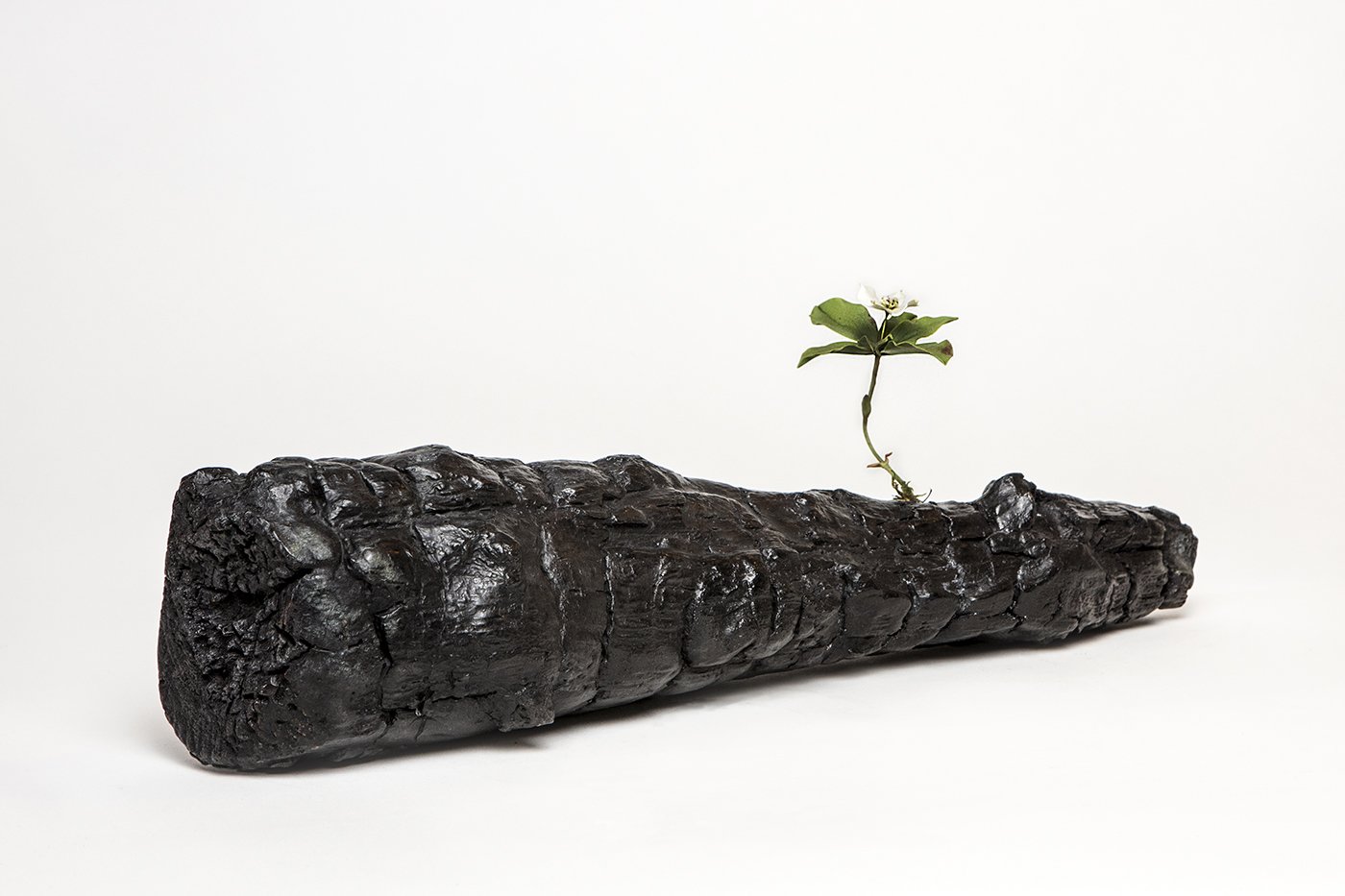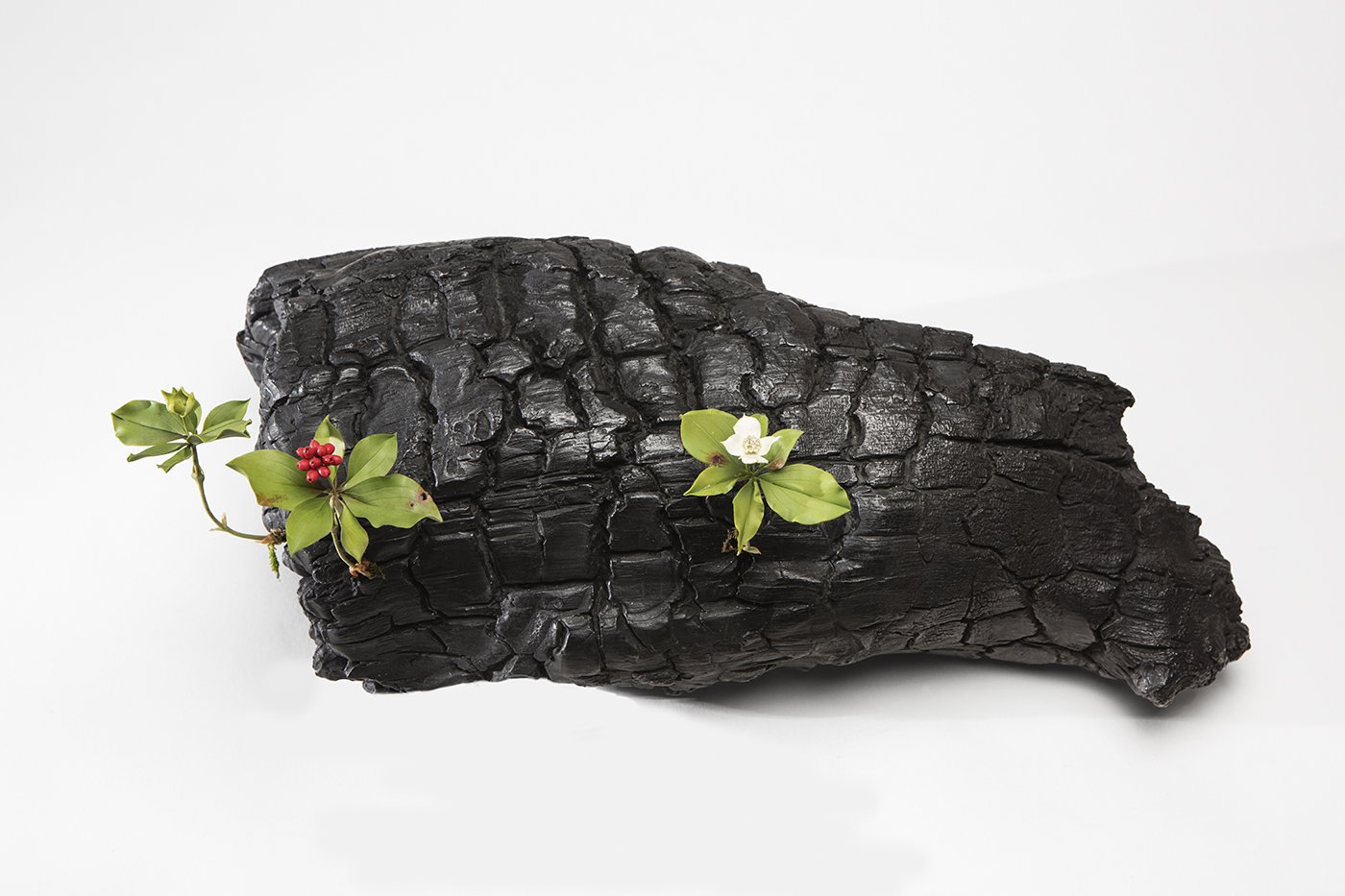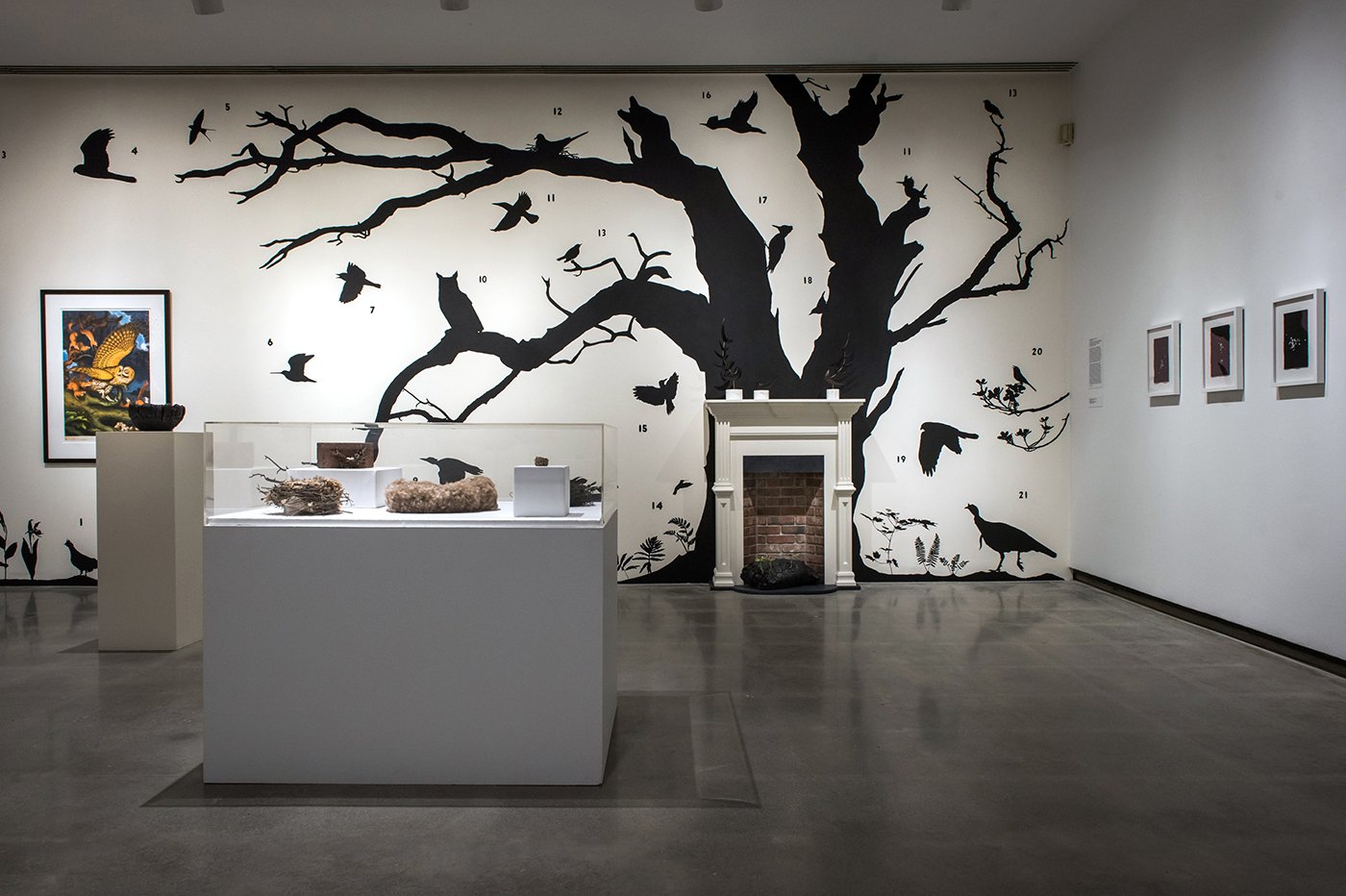Katonah Museum of Art
Curated by Elizabeth Rooklidge and
Nancy Hitchcock
In a provocative display that incorporates contemporary art, relics from the natural world, and items of material culture, the forthcoming exhibition The Nest, an exhibition of art in nature, examines the exquisite beauty and profound symbolism of the nest in art and culture. Drawing its inspiration from the extraordinary form of the bird’s nest, the exhibition examines how the fundamental drive to gather, assemble, and create is a function of both nature and the artistic process.
The exhibition features a selection of real birds’ nests from the Yale Peabody Museum of Natural History collection, one of the most extensive and significant in North America. Works by fifteen contemporary artists—whose practices encompass sculpture, painting, collage, photography, and video—examine the life of birds, as well as the concept of the nest as metaphor of home, birth, protection, and the human body. Drawing from the intersection of nature and technology, bird cams appear on monitors installed throughout the galleries, introducing a view of live birds into the context of natural materials and art objects. Artists in the exhibition include Sharon Beals, Sanford Biggers, Dove Bradshaw, Björn Braun, John Burtle, Shiela Hale, Porky Hefer, Nina Katchadourian, Louise Lawler, Judy Pfaff, James Prosek, Kiki Smith, Andreas Sterzing, Paul Villinski and David Wojnarowicz.
James Prosek has activated the atrium of the museum with several murals and an interior gallery wall with a mural and installation of a fireplace and bronze and wood sculptures.
The Nest, an exhibition of art in nature provides an unexpected lens through which to observe the fascinating parallels between human and animal behavior, raising timely questions about the survival of the birds and their habitats in our increasingly fragile ecological world.
About the fireplace
James Prosek on his mural and installation
When I was asked to create a mural installation for this show around the theme of nests, I immediately thought of designing the mural around a fireplace, the place in the home where we gather to warm ourselves, where we nest. The fireplace provided a physical structure to work off of for a design, and also a conceptual framework. It felt natural to make the fireplace the center of a large tree trunk painted on the wall that would radiate to the outer walls. I thought of a large sprawling oak tree that grows in my town of Easton, Connecticut. I used to hunt and fish near this tree when I was a kid with my friend and mentor Joe Haines, an old game warden. Joe said the old timers he knew that were born in the 19th century called these wide old oaks “wolf oaks.”
For the center of the fire itself I made a bronze sculpture resembling a charred log. The charred log within the fireplace, within the painted tree trunk on the wall (perhaps where the log even came from) provides a Russian-doll effect of concentric stories. In the mythology of architecture the first human dwelling is not a shelter but a clearing in the forest. Lightning struck and a fire started, creating the clearing. Some men returned to the spot and kept the fire going and this became a place for gathering and ritual, and through communion language was invented. Harnessing fire, burning wood from trees, allowed humans to progress. Fire and the fireplace became the core of our shelters, our homes—our nests. I also have a hand made clay flower coming out of the burned log as a statement about the resilience of nature. We exploit our resources endlessly, but life will continue to proliferate, adapt and diversify. This is the first bronze log I’ve ever exhibited. I hope it will provoke conversations about our ever-changing relationship to nature.
March 6 – June 19, 2016
The Nest, an exhibition of Art in Nature
Beitzel and Righter Galleries
Katonah Museum of Art
134 Jay Street - Route 22
Katonah, NY 10536


